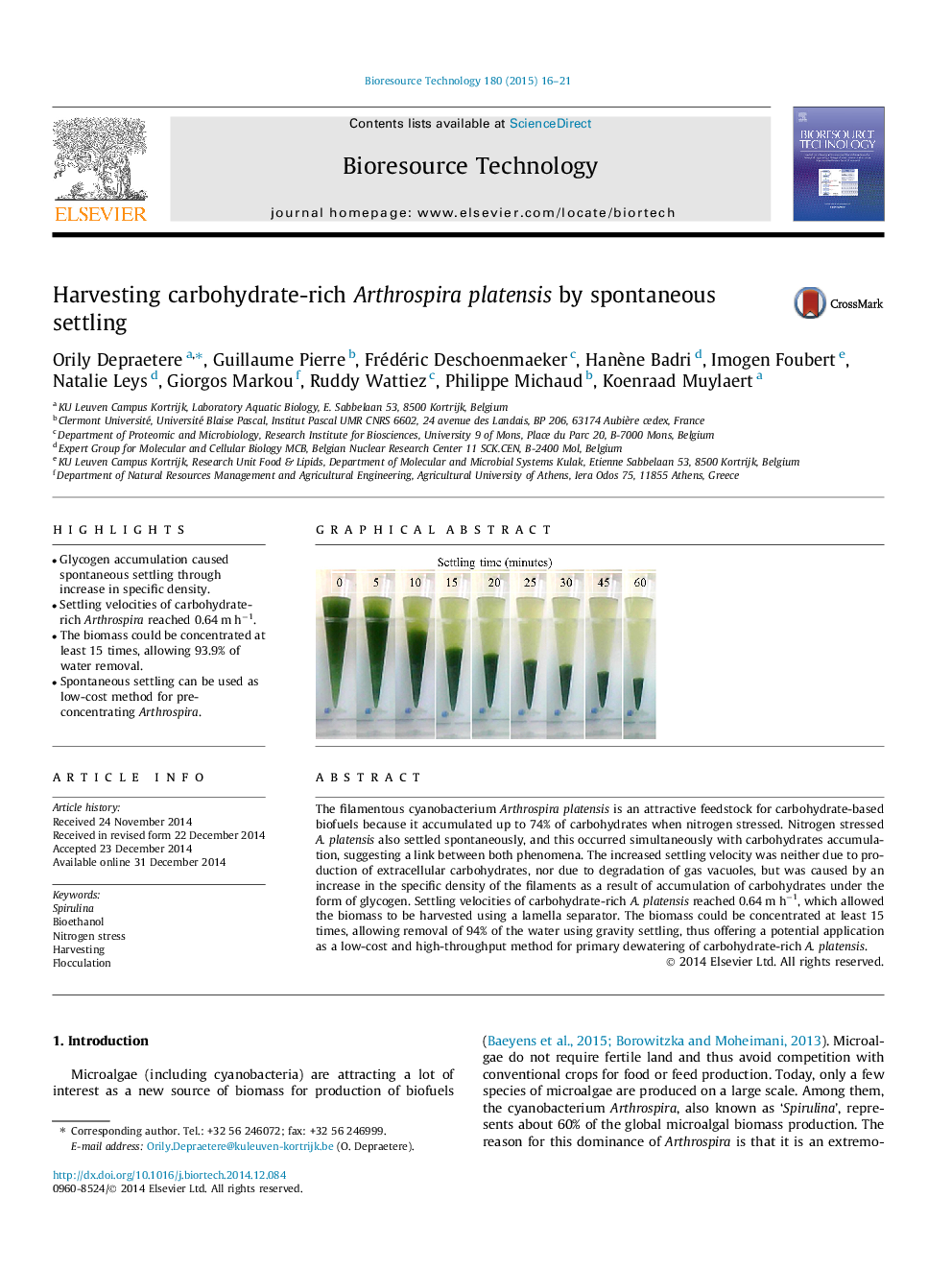| Article ID | Journal | Published Year | Pages | File Type |
|---|---|---|---|---|
| 680038 | Bioresource Technology | 2015 | 6 Pages |
•Glycogen accumulation caused spontaneous settling through increase in specific density.•Settling velocities of carbohydrate-rich Arthrospira reached 0.64 m h−1.•The biomass could be concentrated at least 15 times, allowing 93.9% of water removal.•Spontaneous settling can be used as low-cost method for pre-concentrating Arthrospira.
The filamentous cyanobacterium Arthrospira platensis is an attractive feedstock for carbohydrate-based biofuels because it accumulated up to 74% of carbohydrates when nitrogen stressed. Nitrogen stressed A. platensis also settled spontaneously, and this occurred simultaneously with carbohydrates accumulation, suggesting a link between both phenomena. The increased settling velocity was neither due to production of extracellular carbohydrates, nor due to degradation of gas vacuoles, but was caused by an increase in the specific density of the filaments as a result of accumulation of carbohydrates under the form of glycogen. Settling velocities of carbohydrate-rich A. platensis reached 0.64 m h−1, which allowed the biomass to be harvested using a lamella separator. The biomass could be concentrated at least 15 times, allowing removal of 94% of the water using gravity settling, thus offering a potential application as a low-cost and high-throughput method for primary dewatering of carbohydrate-rich A. platensis.
Graphical abstractFigure optionsDownload full-size imageDownload as PowerPoint slide
